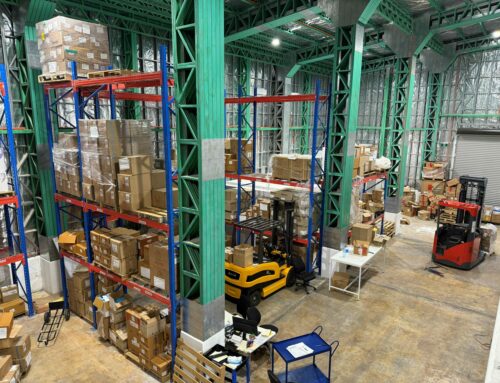Nauru is one step closer to digitising its entire national health system following the roll-out of our electronic medical record software ‘Tamanu’ at the Naoero Public Health Centre (NPHC) in November, 2023.
The new software has been welcomed by health workers who were excited to upgrade from paper-based records to digital following the successful launch of Tamanu at the Republic of Nauru Hospital in June earlier this year.
“The Health Centre staff are fantastically quick learners and are using the system with confidence,” said Corinna Minko, BES’ Project Manager in Nauru.
“In just four weeks, there’s been a fast migration of patient records and medical data into the new software. There’s already been 1,363 patient encounters recorded in Tamanu just from Public Health in 4 weeks. If you include the Hospital, there’s a total of 20,643 patient encounters in Tamanu ,” said Corinna.
Local healthworkers say that Tamanu is much quicker than having to fill in the old paper-based patient forms. They also like the appointments feature and hope it will make tracking no-shows easier, helping them better manage the care of complex patients who would otherwise be lost to follow-up.

Picture: A trainer (right) provides elbow-level support during the deployment of Tamanu at Naoero Public Health Centre.
Why Nauru’s healthcare workforce are embracing digital records
There are many benefits to electronic medical records. In Nauru, the secure back-up of patient records and medical data, and the ability to access and share records between health facilities were big priorities. Patients can now attend either of Nauru’s main facilities with one continuous and complete health care record. Likewise, a visit to the hospital’s emergency department, with a subsequent referral to the health clinic for ongoing care, will be recorded in one place: Tamanu. Doctors can also track individual patients over time, allowing them to provide better clinical support and continuity of care.
The Tamanu software also plugs into other systems like laboratory and radiology services. This means patients can get results faster and book appointments with specialists, instead of having to visit multiple facilities for the same outcome.
As well as patient records, other critical processes including disease notifications have transitioned online. This makes a huge difference for health workers in Nauru because they can access information in real-time. For example, in the event of a public health response for a potential disease outbreak, the staff at NPHC have data from the hospital where patients are being diagnosed, as it happens and at their fingertips.
At an international level, Nauru’s health data will be visible alongside global health indicators. This works to inform better policy, programmatic and funding decisions nationally.

Picture: Clinical data collected in Tamanu automatically aggregates (along with other data sources) and can be reported in Tupaia in real-time, automating nearly all health reporting (Note: sample data shown only)
The future of e-health in Nauru
The latest Tamanu deployment brings the digital roadmap project status close to completion. With just two wellness centres to go, the project end date is close, a milestone that will be celebrated loudly as it will mean that every health care facility in the country will be connected and sharing medical information through Tamanu. It’s likely that Nauru will be one of the first Pacific nations to have their medical records system entirely connected within a single system!
The future of e-health in Nauru looks bright with a scalable, contextualised and sustainable medical record system almost in place. Not only will Nauru’s healthcare workers be the potential leaders of e-health transformation in the Pacific, they will be better equipped to care for the health of the Nauruan people.

Picture: a welcoming sign at Naoero Public Health Centre






